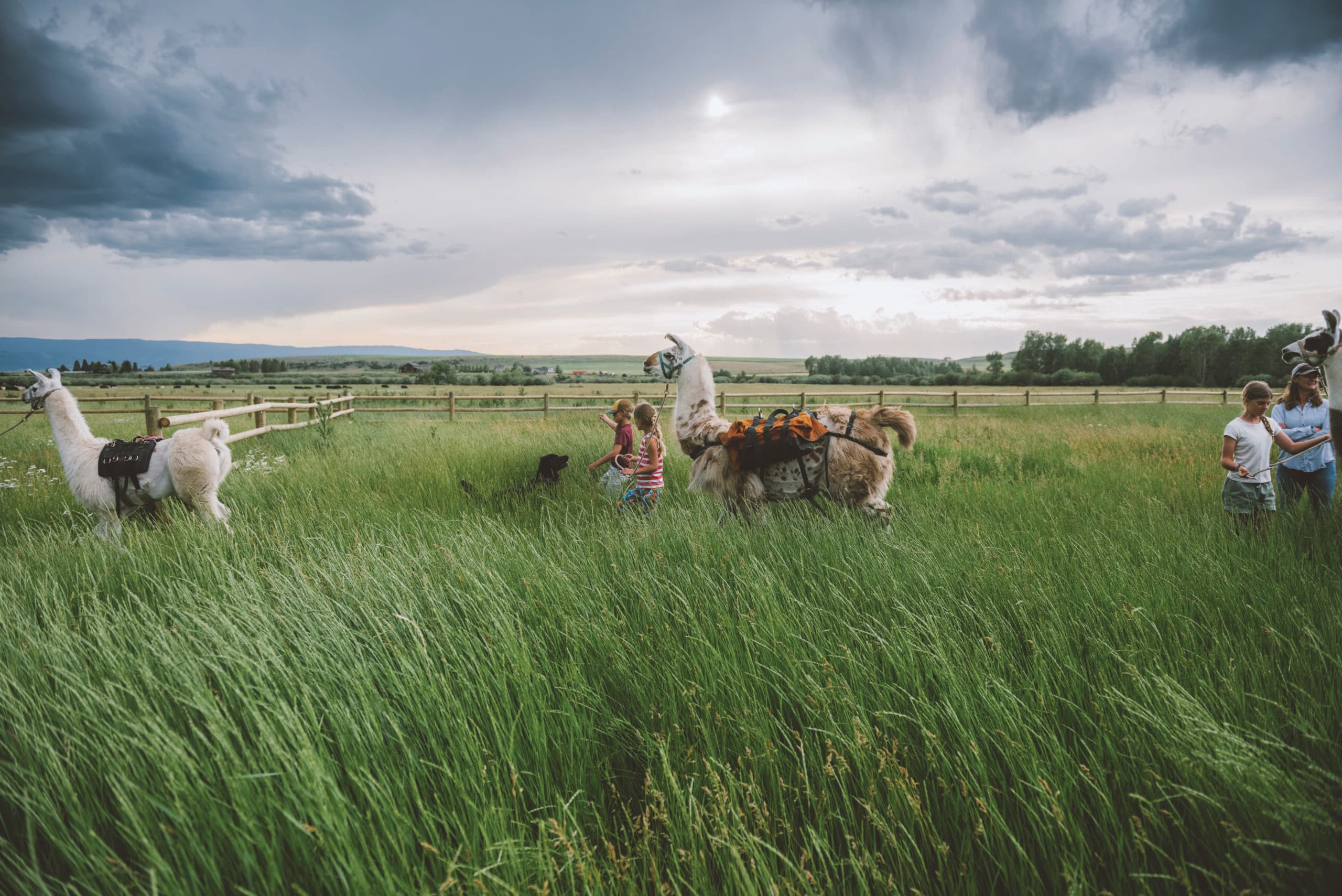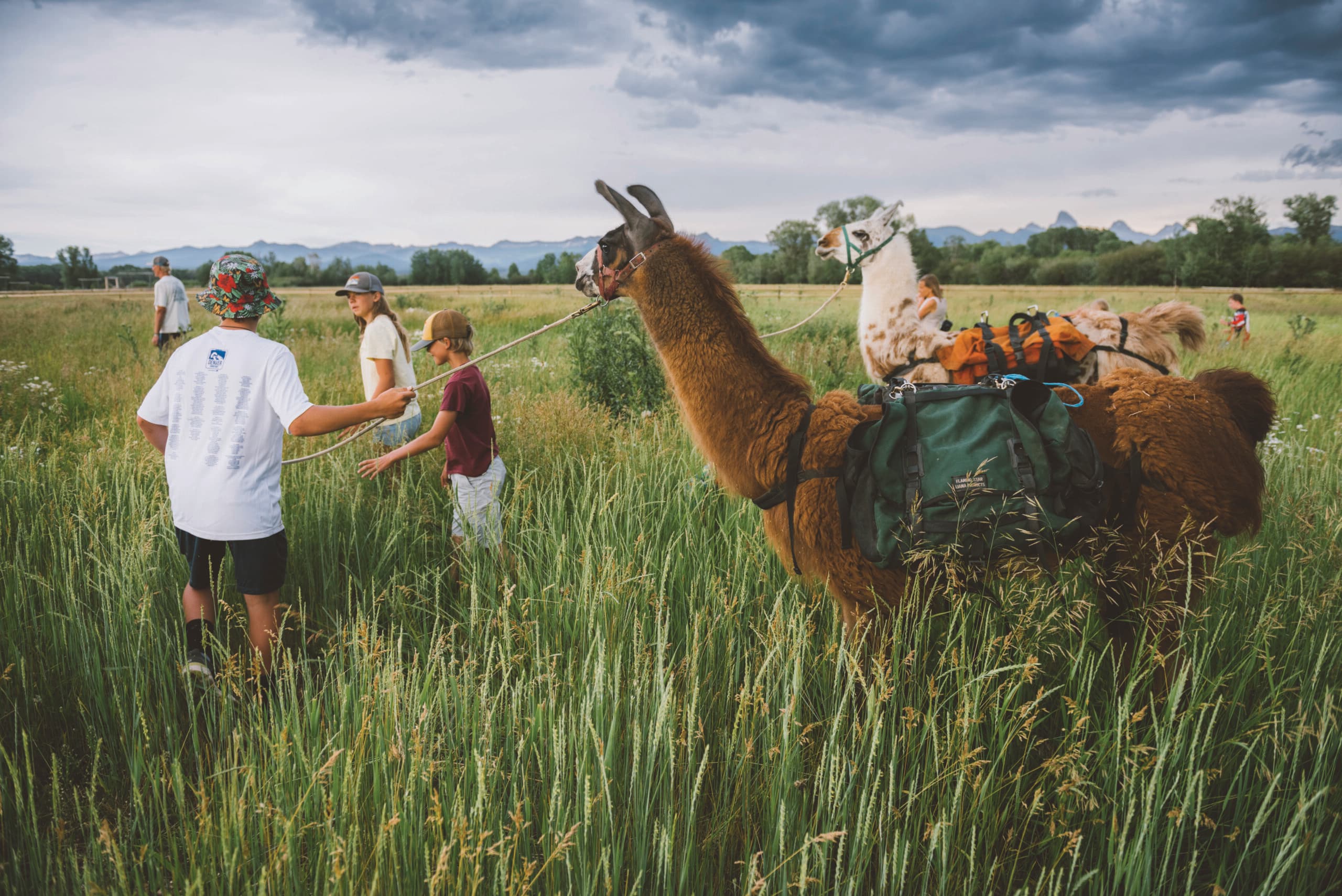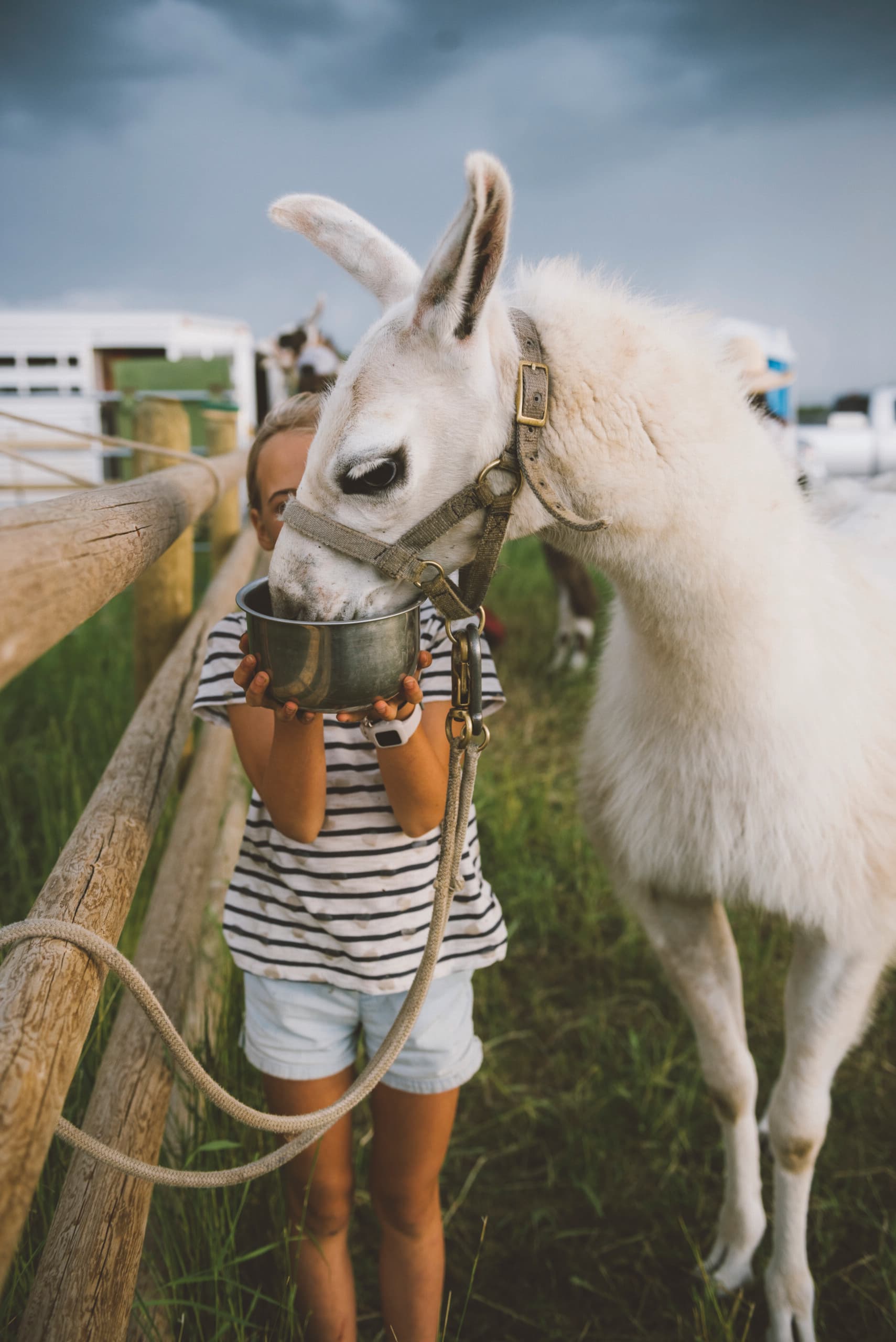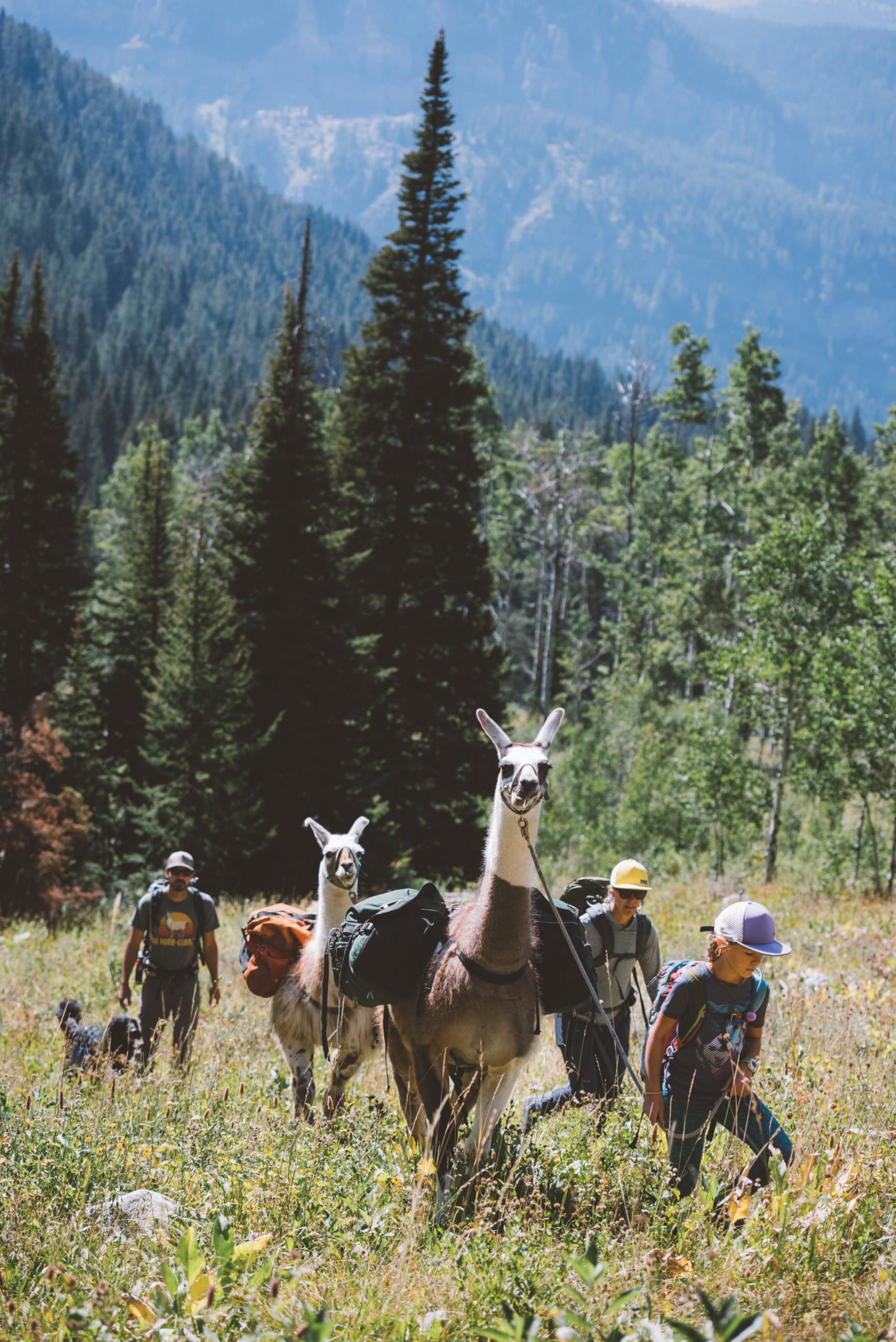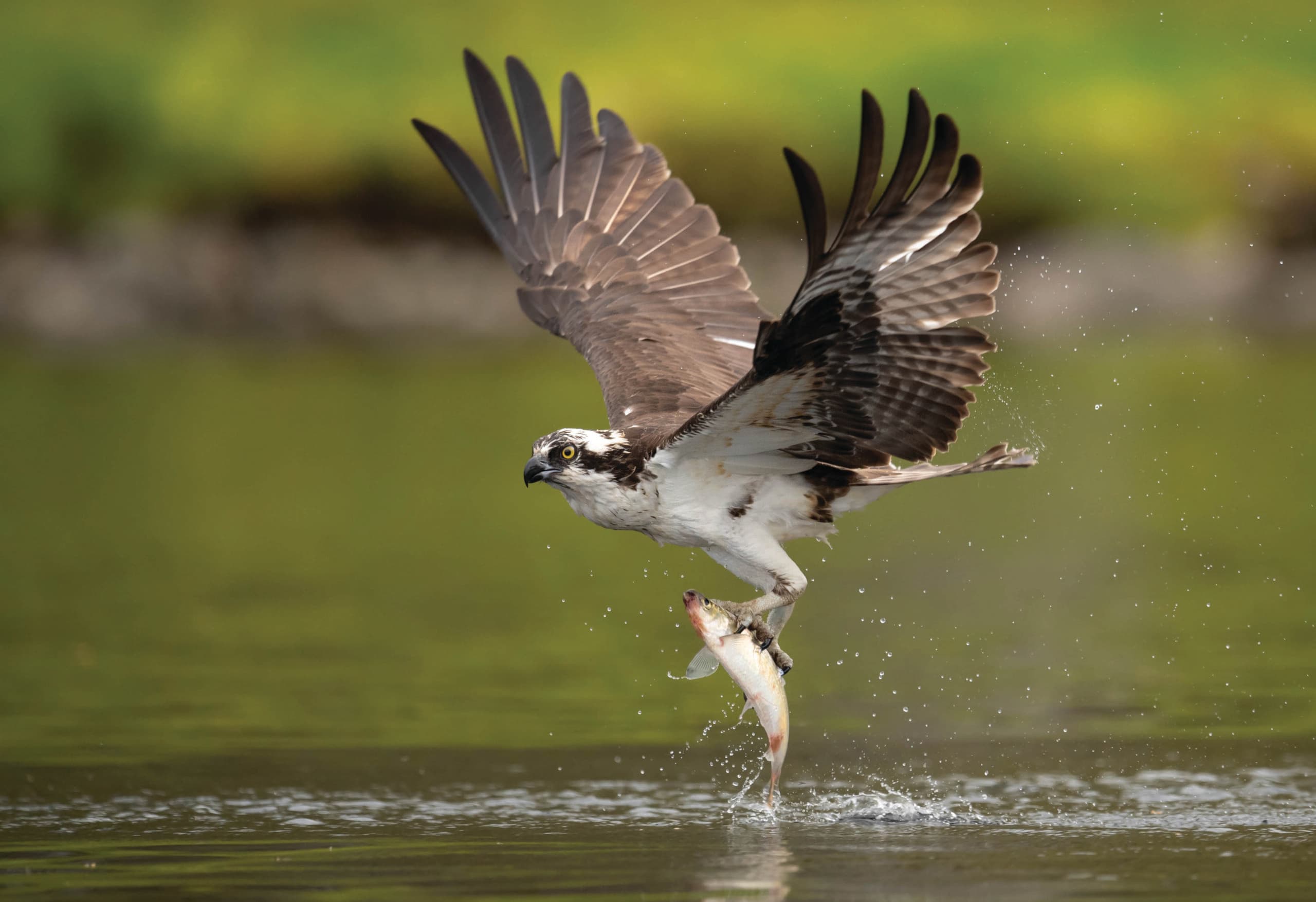No Drama with Llamas
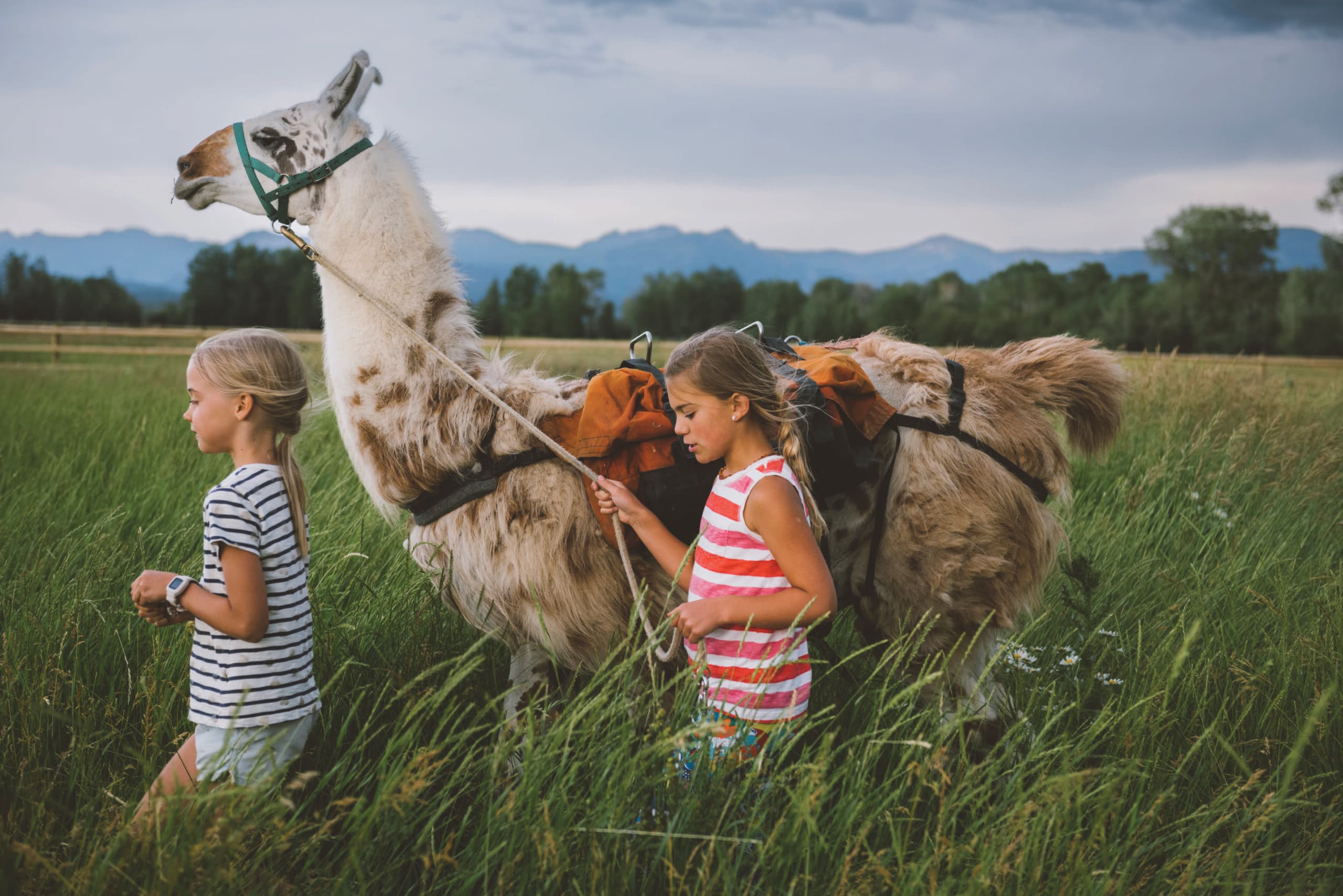
Historic pack animal provides wilderness access for the young and young at heart
It started as a Christmas gift. Nick Beatty had some experience heading into the backcountry using llamas as pack animals to haul gear and supplies.
As the program director for nonprofit Teton Valley Trails and Pathways, Nick had recently started working with Beau Baty and Wilderness Ridge Trail Llamas to haul supplies deeper into the backcountry for trail work.
“When you can get volunteers five to ten miles into the backcountry to work on trail projects, it’s amazing how much work
you can accomplish without having to haul a lot of the gear yourself,” Nick says.
So, when a fundraiser offered an opportunity to bid on a llama “rental,” Nick took a chance and won the prize. He then gave his wife, Anna Lindstedt, the llama rentals as a gift.
“I thought, ‘Llamas?’” Anna says of her reaction to the gift that holiday. “I don’t have any experience with stock animals and I’m not a horse person. But I’m a llama convert. I love llamas. They have personalities and kids can totally handle them.”
For thousands of years the llama has been carrying the load. And today, more people are using the sturdy pack animal known for its gentle and calm personality along paths in the Tetons to earn deeper access to the celebrated wildlands of the Rocky Mountains.
“It’s very doable for someone who doesn’t even have a cat,” says Beau Baty, of navigating a journey with a llama in tow. He and his wife, Kirstin, own and operate Wilderness Ridge Trail Llamas based in Idaho Falls, just over Pine Creek Pass from Victor. Business, he says, is booming.
While the global pandemic changed the way people move and travel in the world—many of whom now seek out experiences in the great outdoors—the llama is gaining traction for its ability to take novice explorers, younger families, and older folks further into the hills and highlands. Horses and mules can carry more weight, but a llama, says Beau, does not require the kind of training needed when it comes to caring for pack animals.
“There are the golden rules for using llamas, whether you are a guide, an outfitter, or a first timer—get the saddle on right, take care of the llama like you take care of yourself, and the last rule is to have fun,” he says. “When you take care of the llama, they are going to take care of you.”
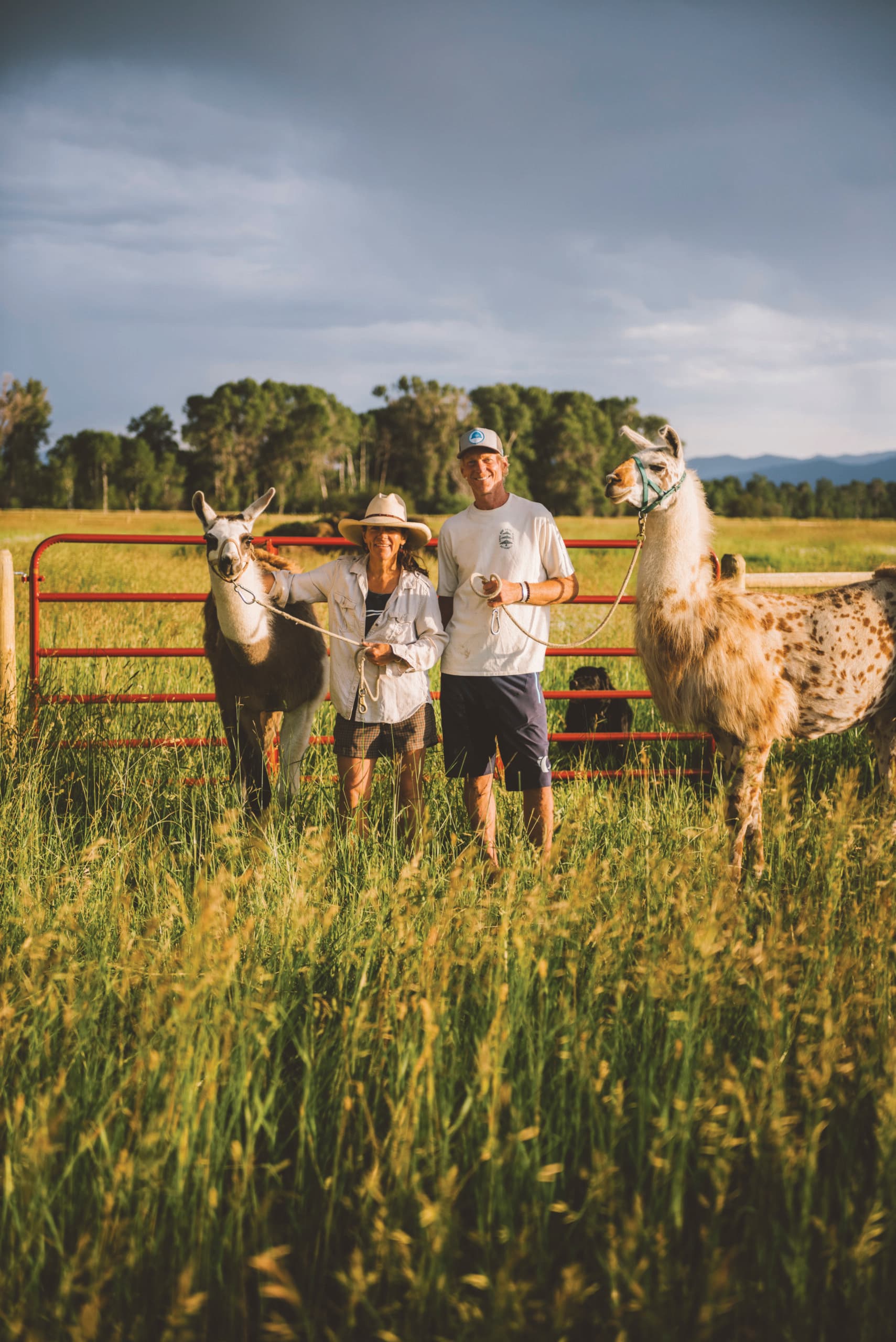
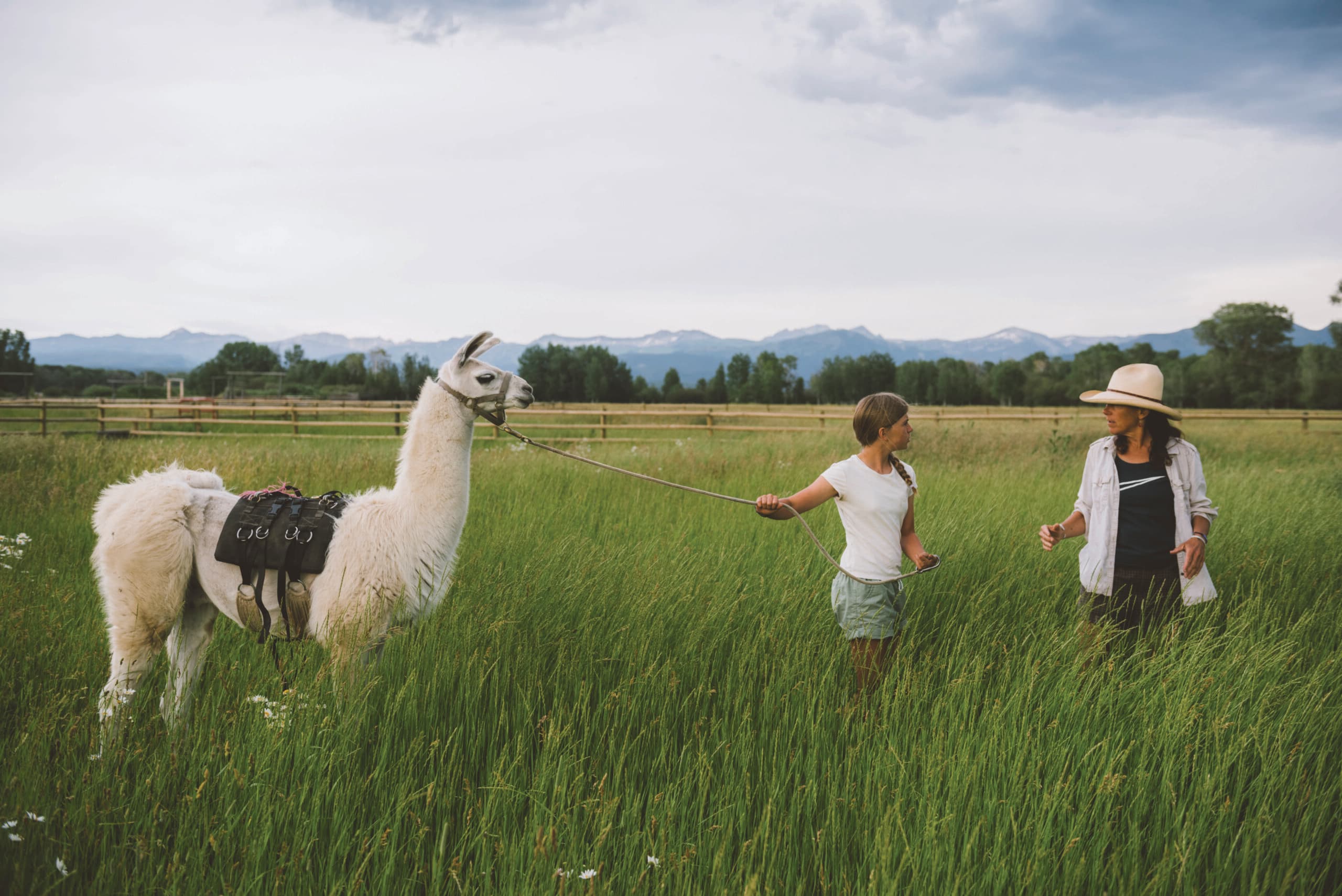
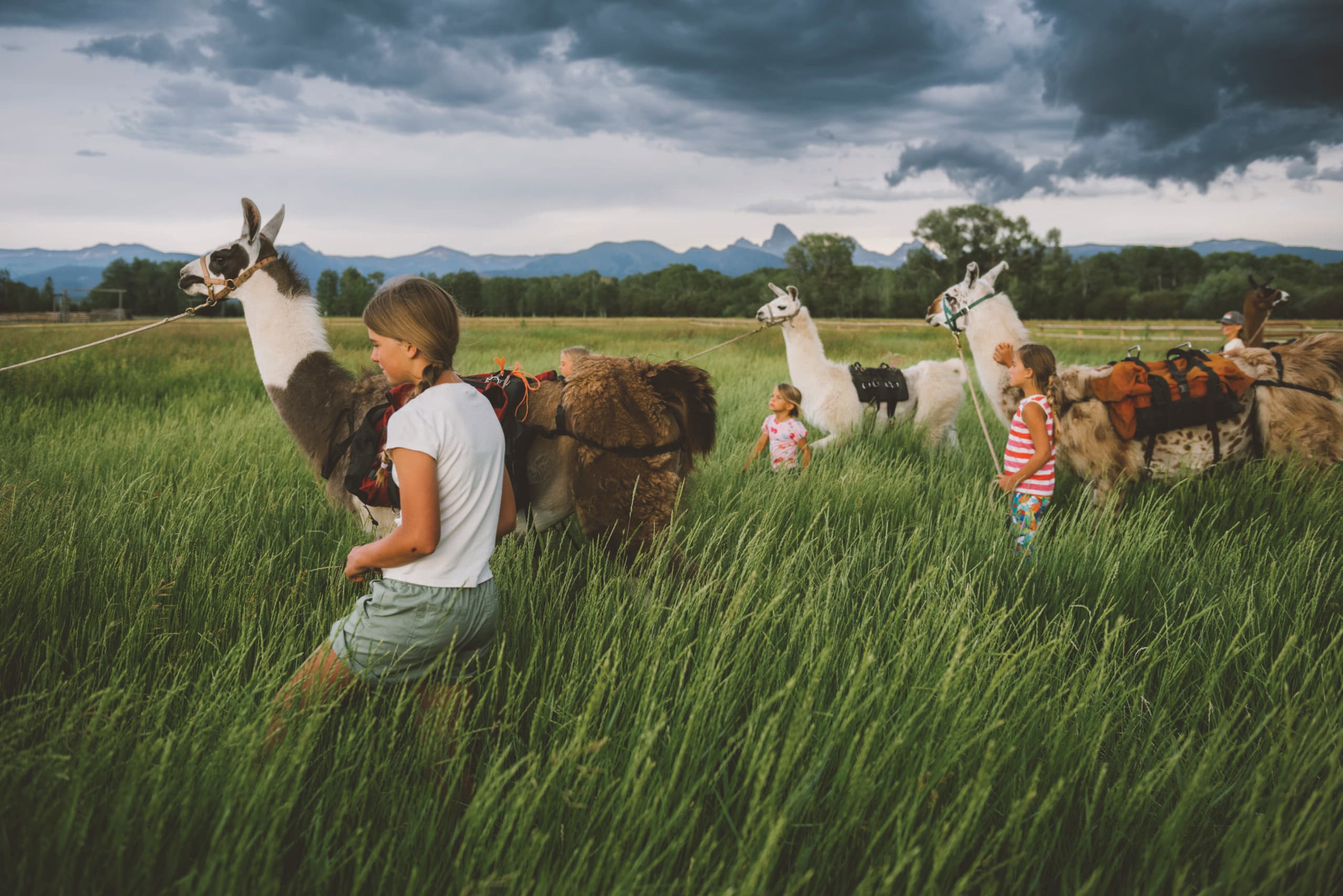
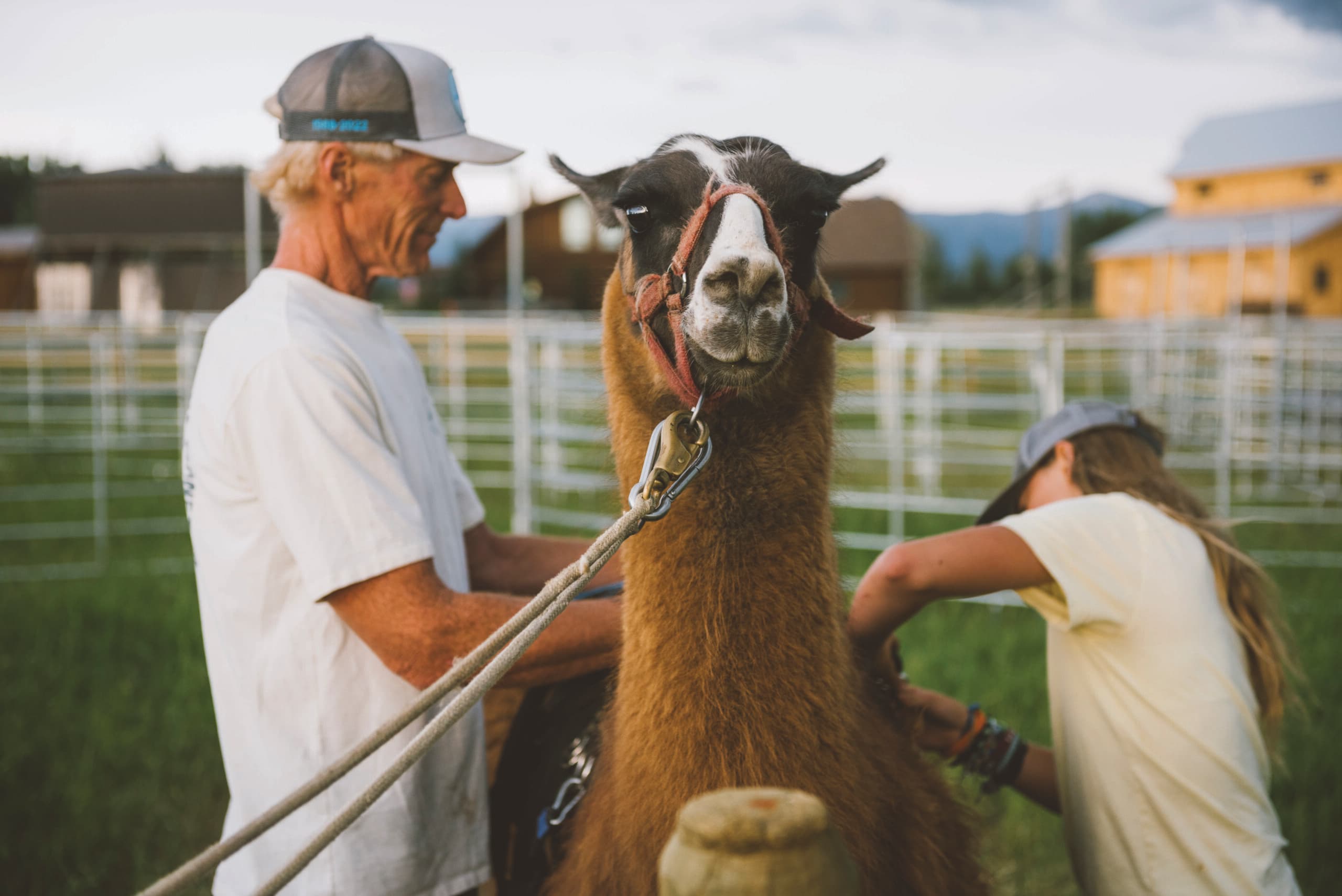
Paul Forester agrees. He’s been hiking Idaho’s big country for decades. When he became a father, the weight of, well, all of it, was a lot to carry, he says with a laugh. He and his then-wife were horse people, but he started using llamas when his sons were young to help them explore further into the backcountry.
“We just loved being out in the mountains, but it was my responsibility to carry everything,” Paul says. He raised three boys in Idaho and credits the llamas with helping to continue their adventures. “I couldn’t do it anymore, so I got two llamas and I thought, ‘Wow! These are awesome helpers.’ I think llamas are wonderful teachers, so I have had llamas for thirty years.”
Wanting to continue to share his love for the llama, Paul says he visited the University of Idaho Extension office in Teton County one day and asked how he could start a 4-H class with the unexpected pack animals.
“I knew nothing about the 4-H program and walked in and said, ‘Hey, my name is Paul and I would like to get involved.’” he says. “I was blown away by the number of programs they are running down there. “
This will be Paul’s second year hosting the llama 4-H program. He had twelve students signed up in his inaugural year and he is excited about the enthusiasm from both the students and the parents.
Outside of the 4-H program, Paul also runs a llama rental business called Wynfromere Farms. After completing the day-and-a-half certification program, the aspiring packer can rent llamas, equipment, and a trailer from Paul. The season typically runs from June through October and Paul offers a special rate for full-time residents.
Both Beau and Paul breed and use Ccara llamas, a kind of llama specifically used for pack trips. The breed is known for its personality, says Beau, and its ability to hike for a full day with sixty to eighty pounds on its back. The llamas, Paul says, are also a master’s class in social-emotional learning, and act as a mirror into the souls of those they are around.
Nick Beatty and Anna Lindstedt’s daughter, Ava, completed the inaugural class last year and plans to saddle up for another course this year.
The family used Nick’s Christmas gift and took three llamas along with another family to Green Mountain Lakes in the Teton Range. The trip was a blast, the llamas were a hit, and the adults found that they could take a lot more sleeping gear and good food to the hills than they could just using their own backs.
“At the time, Ava was six and we hadn’t been getting into the backcountry that much,” says Nick. “With a llama, we were able to bring our kid further into the backcountry and really open her eyes to what the mountains are all about. And that was special.”
After Ava completed Paul’s program, they again rented a llama and headed to Teton Canyon as a family.
“The trip was really fun and it’s great, too, that Ava feels comfortable around the llamas and has gained confidence around a large animal,” Anna says.
As for topping that four-legged Christmas gift? Well, says Nick, that may be a tall order.
Llama rentals
Contact Paul Forester / (208) 724-1886
Wilderness Ridge Trail Llamas
Llama Rentals and Guides
wildernessridgetrailllamas.com / (208) 270-7749
